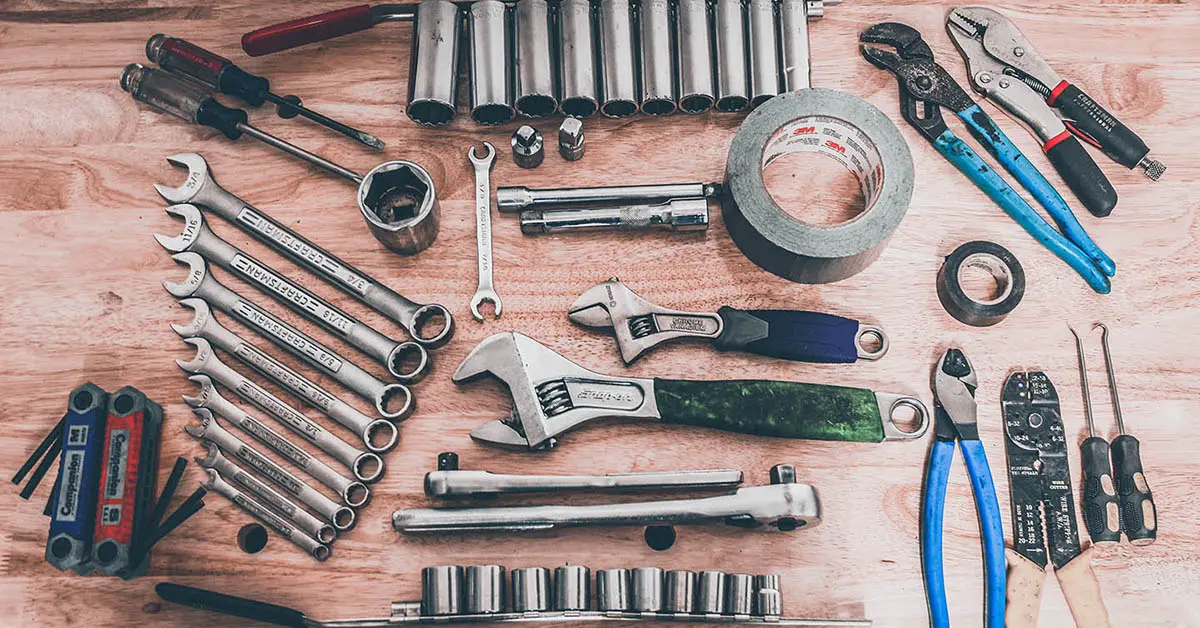

No matter if we’re prepping for a quick outing to our favorite local wheeling destination or gearing up for a cross-country adventure, our pre-trip ritual looks the same. While spending an hour or so going over our rig can sometimes seem tedious, it has saved us hours of potential headaches and money over the years. As is often the case, we rarely need to use our bag of tools, spare parts, and thankfully, our fire extinguisher. However, we’re sure the moment we leave any of the aforementioned items sitting in the garage, we’d need them!
While each vehicle is different, when it comes to off-roading, there’s a general checklist of items that every wheeler must have and things they should check over before heading to the trail. To help guide you on your next wheeling journey, we’ve put together a list of pre-trip rituals that have helped us over the years. In addition, we’ve added in a few tips and parts that have made our ‘wheeling adventures even easier.

4×4 Bolt Check
Going off-road puts significantly more stress on your 4×4’s components versus driving down the highway. This can equate to bolts working their way loose over time. An easy way to keep track of what’s happening under your vehicle is by breaking out your tool set and doing a bolt check. The first time you do this, it’s going to take you a couple of hours. However, here’s a tip to make life easier moving forward- paint mark your hardware. A simple paint mark will allow you to see if any of your components have come loose with just a quick glance. This can make trail repair and diagnosis exponentially faster and prevent it all together.

Fluids-Check, fill, stock
You probably learned to check your engine oil when you got your first car. However, that’s only a portion of the critical fluids used to keep your 4×4 running properly. If it takes fluid, check it. From your coolant to your differentials, a few minutes here will save you serious time and prevent failure. Also, if you frequently drop your 4×4 into mud and water, make sure you’re changing (or at the very least checking) your differential fluid frequently. As the lowest lubricated part on your vehicle, it can be easier for water to get in and wreak havoc on your differentials internals.

Tools
As you’re performing your bolt check, take note of the tools you used. This will be helpful when crafting a tool bag to carry with you. If your Jeep or 4×4 requires a special size socket or wrench, be sure you have it. Nothing is worse than having a spare part, but not being able to install it due to not having the correct tools.

First Aid Kit
Any time you mix heavy metal, nature, and man, there’s bound to be a scrape or two. Going off-road is more physical than many people realize. This is especially true for your spotter/co-pilot. Be sure to have a small first aid kit onboard for when then inevitable trail boo-boo happens.

Recovery Gear
At the very least, your rig should always have at least one properly weight-rated recovery strap and a set of removable shackles. If you have a winch, we recommend making a tree savor, winch weight, and snatch strap part of your recovery bag as well. A good pair of gloves will be an added bonus. Pro Tip- Make sure you or your co-pilot can access your recovery gear quickly. Often times on the trail, seconds count.

Hydration
Always pack plenty of water. It’s easy to lose track of time when you’re having fun on the trail, but dehydration off-road is a real problem. We like to use refillable water bottles and fill one or two with ice. A few trail snacks is great to have, but without question, water is what you want the most of.

Trail Table
After decades of wheeling, we’ve found one of the nicest things you can have on your 4×4 is a flat spot to work on. This will not only serve as an excellent place to work on your trail failures, but can double as a lunch bench. On our JK, we use the Bestop RoughRider Tailgate Shelf. We like that it simply bolts to the JK’s stock tailgate and folds out of the way when not in use. It’s easy to clean and extremely handy on the trail.

Fire Extinguisher
With any luck, you’ll never have to use a fire extinguisher. We’ve unfortunately had too many times and were thankful we had them. A simple extinguisher with an ABC rating from your local hardware store is cheap insurance. Yes, you can get more complex and expensive extinguisher systems, but we’ve had great luck with the type shown here over the years. We recommend having two. One mounted near you in the cockpit and another at the rear of the vehicle.

Air
The cheapest way you can make your 4×4 ride smoother and perform better off-road is by lowering the air pressure in your tires. However, you need a good plan for getting the air bag in whenever you are done. A small portable air compressor is money well spent. Be sure to get a proper air gauge that can read into the single digit range, and a valve core remover will make dropping pressure even faster.
Beyond the Basics
Think of this list as a starting point. Each vehicle and set of circumstances will be different. If you’re wheeling in the winter, always carry spare clothes and a warm blanket in case you have to sleep in your rig overnight. Going to be spending a lot of time with your Sunrider folded back? Of course, sun protection needs to be on your list. Before satellite trackers became so effective, having a map was one of the most important tools you could carry. In some regards, it still is (no dead batteries to worry about!).










